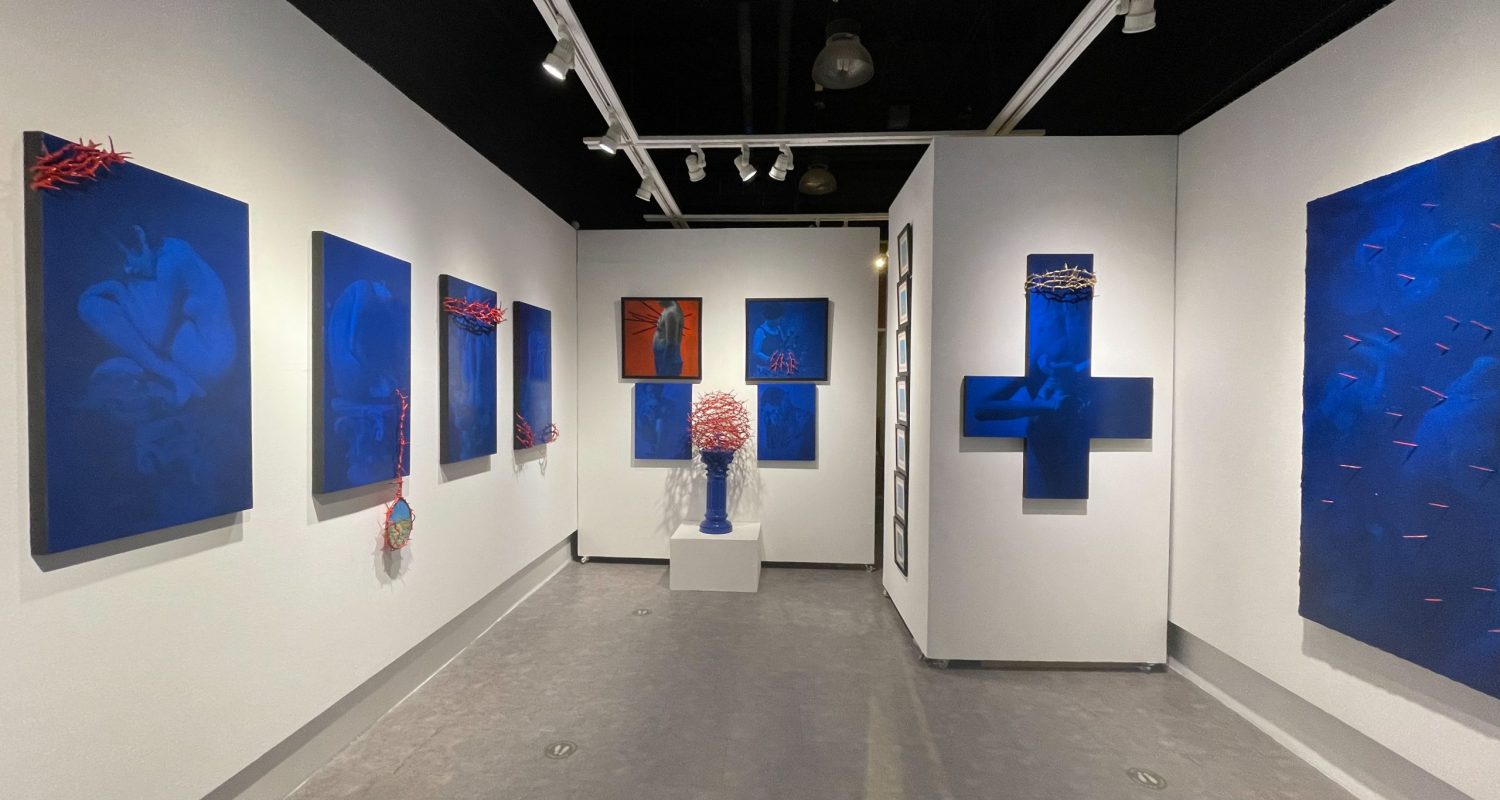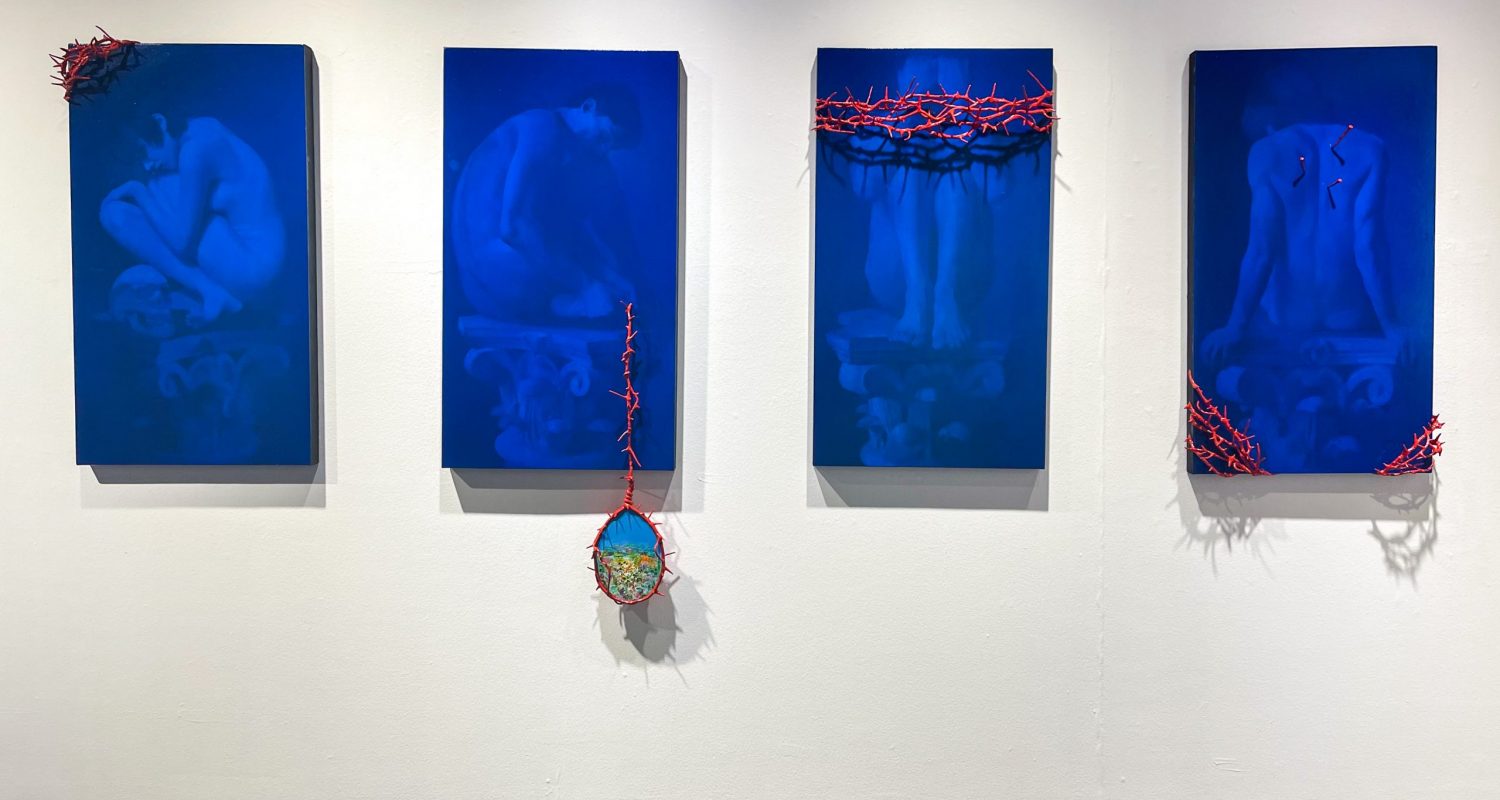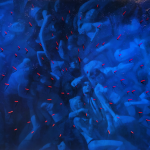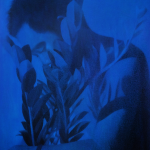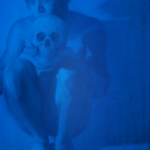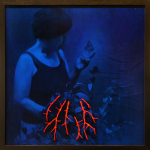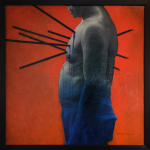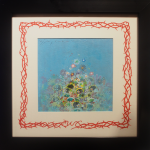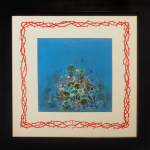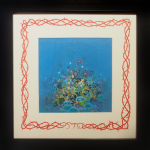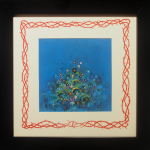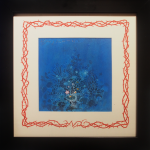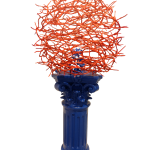THE BLUE PERIOD
Christian Maglente
December 22, 2021
THE BLUE PERIOD
WRITTEN BY JAY BAUTISTA
True Blue
It was while leisurely walking along the Art Walk in SM Megamall two years ago that Christian Maglente chanced upon what would eventually change the course of his artistic life and his commitment to painting.
A stark blue print with vividly colorful flowers by Juvenal Sanso that so enthralled Maglente as he observed it for hours to no end. Imbibing its distinct blueness, he felt immediate calmness as it exuded regality. Maglente became engrossed and smitten by this epiphany that he would be inspired to create pieces that embraced Sanso’s blue hues into his succeeding artworks—including his winning entries in art competitions and invited group exhibitions.
It is ironic that in order to connect to the world an artist must be alone in his thoughts through torturous hours, thus, all the more being in a lockdown, he has created something true and beautiful.
Blue Period, the first solo exhibition of Maglente at Art Verité, takes on a deeper look on an artist being by his lonesome as he reflects on his life and art. He spent his time becoming inspired by the particular piece called Sanso’s Blue while trying to live life in the middle of a pandemic. At face value, blue could mean open space as seen in the sky and sea. It could also be synonymous to freedom and imagination, as it is also relatable to intuition and sensitivity.
For Maglente, Blue Period aesthetically employs excessive melancholy as it is an anguishing portrait of an artist in sensitive sadness. As one enters the gallery space, four paintings capture his prevalent moods–placed side-by-side– captures what Maglente have alternately long been feeling.
Bored as he is always being left alone at home—with his parents in the province and his other siblings doing other endeavors. As an artist chances are you are left behind, it is not escapable not to be Jaded. As an artist one has so many doubts, the greater the artist, the bigger the inquiry. In Hated Maglente admits he is more disliked than he has friends and fans. Relatively, it is more of his appearance than his art pieces. Deep within one can only be submerged in the fourth state which sums up all his moods—Tired—however he never gives up.
Grief Underneath has the promise of being Maglente’s masterpiece as it best captures the wallowing quagmire we are all collectively in. From atop one vantages the body-to-body enmeshed against each other–like in a provincial jail–as the space is too tight for comfort. One can almost hear the painful moans of hurt coming from below as those inflicted by the coronavirus have been growing by the day. One can only hope there is a light at the end of the quarantine tunnel we are in.
Maglente documents his ouvre tracing the consistency of his artistic transition from his past colors of light blue to his current dark blue. In Waiting series, Maglente unravels the evolution of a visual language he honed to his contemporary style. Maglente was so obsessed with blue that he adopted it as his signature pantone-like oil paint and never returned to festive mediocrity. As a process, he initially illustrates his desired image using rough sketch then finishes it off with an overlay of that particular shade of blue.
Ever the good son, Pain and Remain are personal tributes to his loving parents. Pain is his ode to his father who bore all the struggles just to make both ends meet and provide food on the table. Maglente aims for the tri-color of the Philippine flag by emulating them. His strength is he can be both personal and nationalistic. Remain is Maglente’s mother who will always be the last one to eat until every member had his fill, last one to let go from a hug—she would always understand you for who you are. She can be credited as the one who developed the artistry in the Maglente siblings.
For Maglente, one should aspire to be a good person before a great artist. Cold is autobiographical on how Maglente perceives himself being seen by others. By appearance Maglente always wears black and puts on eyeliner, he is even being denounced as an anti-christ by both his teachers and fellow students-alike And because he listens to heavy metal music he is judged as demonic. Thus, he is cold to these kinds of negative people.
Continuing his examination of himself are twin works discussing our mortality on earth. In Embrace he welcomes life as Maglente is all-arms-open to the cusp of living. Vision speaks of the beauty of impermanence. Life is short. We should do what we love most, here and now. With the presence of a skull as memento mori, Maglente tasks himself seriously as our eventual demise is our fate.
Notice how Maglente concocts his titles as just one word descriptions of what he was relatively feeling but indulges in deep thought. Maglente never aspires to be the Sanso that he is, rather he uses Sanso’s confident ire to be bold and flamboyant in his own artworks. Through his blue, Maglente has kept faith in our prevalent despair as it is the color of chance as he continues the foray in churning out one blue painting after another.
Pablo Picasso’s most difficult years—where he had no fixed studio and no artistic success—were considered his Blue Period. Art History however would prove that Picasso developed his own visual style during this tumultuous time from 1901 to 1904, he would paint essentially monochromatic colors in shades of blue before being warmed by different colors he became famous for.
Solitude is more than a tool, it is an artist’s workshop. For Maglente, Blue Period is also his tipping point as a contemporary painter. It is his coming-out party as he has become creative on his canvases. Despite the gloominess, it is a celebration of his young artistic soul— an ode to a recognized Filipino master.
He only just began.
